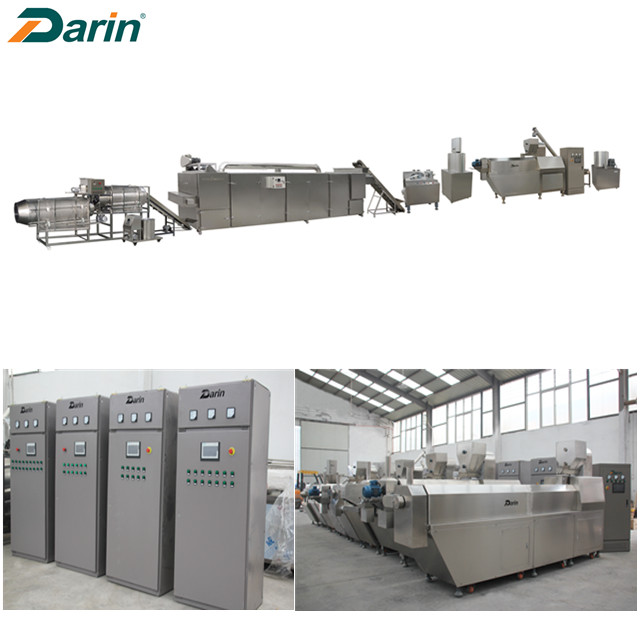The 2009 Confederations Cup (hereinafter referred to as the Confederations Cup) and the 2010 World Cup will be held in South Africa respectively. In the bid to host the World Cup, the South African government promised to provide high quality and efficient transportation services. In order to ensure the smooth transportation, the South African government has stepped up the construction of the public transportation system and the purchase of passenger cars has also been put on the agenda.
At the same time, under the influence of the financial crisis, the global passenger car market has been sluggish. Therefore, the South African passenger car market driven by government procurement has become the target of many international bus manufacturers.
South Africa to Purchase 1,422 Passenger Cars
On October 17, Kuban Pillay, director-general of public transport for South Africa’s Ministry of Transport, said that in order to meet the public transport needs of the 2010 World Cup, the government will purchase 1,422 passenger cars.
Procurement vehicles included 210 luxury buses for the World Cup Organizing Committee, 286 buses and 189 buses for the transport of events, and 258 buses and 479 shuttles to meet the needs of the general audience. These buses will be operated by Autopax.
Prior to the introduction of the procurement plan, in October 2007, the South African Ministry of Communications officials met with representatives of long-distance passenger transport companies of the South African Bus Transport Association (SABOA) and hoped that they would provide 100 vehicles for the World Cup from 800 vehicles. However, in February 2008, SABOA stated that long-distance passenger transport companies could not provide all vehicles. The insufficient capacity of South African passenger transport companies has prompted the South African government to bid only for the vehicles it needs.
Multinational companies “snatch†the South African market
In 2007, the South African automobile market was affected by rising interest rates and the strike of the National Metals and Employees Union of South Africa (NUMSA). Total car sales fell by 4.6% year-on-year, but commercial vehicle sales rose by 6.4%. According to forecasts from International Business Window (a UK company providing global business information services), sales of commercial vehicles in South Africa will increase at an annual rate of 8.8% in 2009 and 2010.
Jeff Plessis, the manager of the Scandinavian region of the German company, said that after the global financial crisis broke out, the European passenger car market basically stopped. At present, Manchester's passenger bus orders in the United Kingdom have dropped to around 150 vehicles per month. While the South African market is driven by government procurement, demand remains strong.
A few days ago, the South African government began public bidding for vehicles required for the event and will purchase 210 luxury passenger cars. International commercial vehicle companies to seize this opportunity, have taken action to occupy the market.
As a partner of the 2010 World Cup, Hyundai Motor South Africa introduced the "Universal" passenger bus, which had served the 2002 World Cup. Stanley Anderson, Head of Marketing at Hyundai Motor South Africa, said: “Modern has modified the model to meet South Africa's weight restrictions on luxury passenger cars and can deliver within three months of placing orders.â€
The tourist bus market is another market segment that all companies compete for. During the 2010 World Cup, international visitors to South Africa will increase, which will drive demand for tourist buses. To this end, Mercedes-Benz launched a 14-meter passenger car, which can accommodate 48 people, 52 people and 60 people respectively according to needs. The annual sales in South Africa are expected to reach 80-100 vehicles.
Different from the introduction of new models by Hyundai and Mercedes-Benz, occupying the market, Marco Polo, a Brazilian passenger car manufacturer, has invested 100 million rand (approximately RMB 67.7 million) in the way he invests and builds factories in the region, and has expanded its presence in South Africa. Province of Germiston's factory. After the expansion of the plant, production capacity will increase threefold to reach an annual output of 1,800 vehicles. It is reported that Marco Polo participated in the bidding for a series of major projects in South Africa. It is expected that this year's sales in South Africa will exceed 700 vehicles.
Leveraging Dealers to Enter South African Bus Companies
South Africa has implemented the "Automotive Industry Development Plan (MIDP)" since 1995, and its preferential policies have greatly encouraged the world's major car manufacturers to invest and set up plants in South Africa. Relative to international commercial vehicle companies, Chinese bus companies entered the South African market relatively late, but have already opened some markets.
China Automotive Manufacturers (Pty) Ltd. is a trading company that imports Chinese automobiles. Its imported Xiamen Jinlv Lightbus is South Africa's best-selling model, and its local brand name is Inyathi. But during the 2010 World Cup in Johannesburg, whether Inyathi could become a qualified means of transportation was still controversial within the government. Therefore, China Automotive Manufacturers Co., Ltd. began to import Xiamen Golden Brigade coaches in order to compete for this order.
China Motor Corporation is a company founded in Boksburg that imports Yutong buses. Yilan Moran, chief executive of China Motors, said that the company is testing three Yutong buses, including 17, 22 and large buses. In addition, in October 2008, an Anyuan bus reported that Anyuan Bus had received an order for South Africa to order 30 PK6139A luxury buses for the 2010 World Cup.
In South Africa, Chinese bus companies have used local dealers to increase market share. The biennial International Motor Show in Johannesburg, South Africa, is a good opportunity for Chinese bus companies to show themselves. At the 2008 Johannesburg International Auto Show held in early November of this year, companies such as Jinlong, Yutong, Nanjing Iveco, and Great Wall all used local distributors to display their products.
Judging from the current market situation, the South African passenger car market is occupied by Man, Volkswagen, Iveco, Scania, etc. China's large and medium-sized passenger cars are still in the initial stage in the South African market, with limited sales and models. In order for Chinese bus companies to enter this market, they can take advantage of the cost-effectiveness and prompt delivery of Chinese passenger cars, grasp the demand for car purchases in the Confederations Cup and South Africa during the World Cup, and launch vehicles that meet the needs of South Africa.
South Africa accelerates construction of BRT
Since the successful bid to host the 2010 World Cup, the backward public transport system in South Africa has been criticized. In order to change this backwardness, South Africa is determined to build a BRT system. According to the plan, South Africa will host the BRT system in Johannesburg, Cape Town, Tswane, Durban, Bloemfontein and other cities hosted by the 2010 World Cup to serve the business district and surrounding towns.
As the largest city in South Africa, Johannesburg approved the construction of a BRT project in 2006. The city's BRT project also has a resounding name, Rea Vaya (meaning "We set off"). The first phase of the project will be completed in 2013 with a total investment of 10 billion rand (about 6.67 billion renminbi), of which 2 billion rand (about 1.35 billion renminbi) will be used to purchase 1,190 8.5 to 18.5 meters of buses. Phase I, Phase A, was completed in April 2009. It will build 40 kilometers of roads and 48 stations to meet the transport needs of the Confederations Cup. The first phase of Phase B was completed before the World Cup. A total of 86 kilometers and 102 stations were completed.
In response to Johannesburg, Cape Town also started building BRT projects in October this year. The project is divided into 4 phases and will be completed by 2020. The total project will cost 10 billion rand (about 6.67 billion renminbi). The first phase was completed in March 2010 and invested 1.35 billion rand (approximately 910 million yuan).
Corn Flakes Extruding Line produces corn flakes, breakfast cereals, and puff snacks similar to Kellogg and Nestle products, the shapes and sizes can be various.
1, Complete circle for production of corn flakes, which has regular shapes and tasty taste. Continuous, automatic and economical process with an easily controlled production cycle.
2, Thanks to the particular process conditions, the finished product having long lasting crispness in milk due to minimal damage of the cereal's starch structure during processing.
3, End product exhibiting the best combination of texture, color and flavor base on an accurate control of the conditioning, drying and toasting stages of the process.
4, Unlimited choice of shapes and formulae for shaped cereal, fully automatic and continuous processing procedures.
5, It is not just a combination of machines, but an integrated process starting with raw material feeding and ending at the packaging room. Having the ability to add vitamins, protein concentrates and fiber further enhances the ranges of products possible with the corn flakes system, thus allowing you make the right product for each market segment.
6, Based on low density, strong product structure and low permeability, breakfast cereals made on Corn Flakes Processing Line are excellent for coating with sugar solutions.
7, Various solutions range from cost-economic to advanced, also for packing machine; electric, gas and oil can be power.


Corn Flakes Extruding Line
Corn Flakes Production Line,Corn Flakes Extrusion Machine,Corn Flakes Processing Plant,Corn Flakes Extruder Machine
Jinan Darin Machinery Co., Ltd. , http://www.globaldarin.com